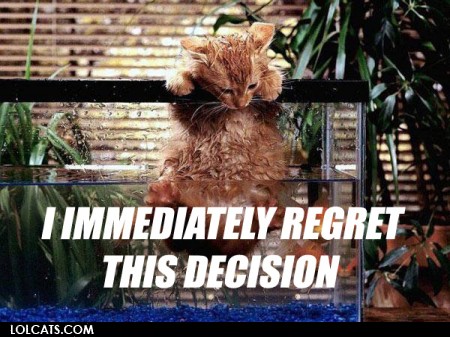
I just finished reading the book Thinking in bets by Annie Duke. I highly recommend this book if you want to understand how to make better decisions. She talks about this amazing concept called resulting that blew my mind. In her own words
…was a victim of our tendency to equate the quality of a decision with the quality of its outcome. Poker players have a word for this: “resulting.” When I started playing poker, more experienced players warned me about the dangers of resulting, cautioning me to resist the temptation to change my strategy just because a few hands didn’t turn out well in the short run.
In all organizations, we typically result hard. Think back, aren’t all decisions considered good or bad based on the outcome? great quarter – good decisions led to it, bad quarter – bad decisions led to it. So as product person how do you counter this default resulting behavior? In the book, Annie provides a few suggestions, a few of those listed below
Write down your beliefs about a decision beforehand
At the end of the day, you have a process, a belief based on your experiences and your thinking on how a certain decision is going to play out. The trick is to write that down before the decision outcome is known. This way you can clearly separate what you thought the decision was and what actually transpired. If the two are different, you now have an opportunity to dig deeper and figure out why? Either you need to update your beliefs as you found something new, or your outcome was just based on luck. Following this rule makes you resist the urge to result.
For example: if you are going to a meeting to talk about the results of an A/B test that you have recently concluded. Write down beforehand what you expect the result to be and why. Once you get into the meeting you will see the actual results. You now can match your beliefs vs reality. If they don’t match – dig deeper. In the event that you don’t change your beliefs – there is a high probability that the actual outcome was a random outcome. So don’t change your strategy!
Do a pre-mortem
Post-mortems are a pretty standard concept nowadays after something has gone wrong, you figure out why and take corrective action. The idea is that you won’t make the same mistake again. A pre-mortem is a similar concept with the key distinction that you meet as a team before any major initiative/launch kickoff, think about all the things that can go wrong. Doing this before things go wrong provides that barrier against resulting affecting your thinking. Post-mortems have the shadow of the wrong thing that just happened – and thus are hugely influenced by the result (the thing that went wrong). This can again lead to resulting where you may unwittingly attribute a wrong cause to the result that you just got. Doing a pre-mortem expands the envelope to all the things that can wrong without thinking about a particular thing that went wrong (result).
Blue team/red team
This technique is targeted towards avoiding groupthink which also plays a huge part in resulting. The central idea is that for every major decision you divide the participants who are involved into two teams, blue and red. One team should argue for a result and the other team should argue against. After a while, the teams should switch. This forces each participant to think through all options for and against un-anchors them from a single result, thus getting better decision quality.
But why does all of this matter, should we worry about decision quality at all? Whats the point of all this? Again, Annie Duke says it best in her own words.
This is ultimately very good news: part of the skill in life comes from learning to be a better belief calibrator, using experience and information to more objectively update our beliefs to more accurately represent the world.